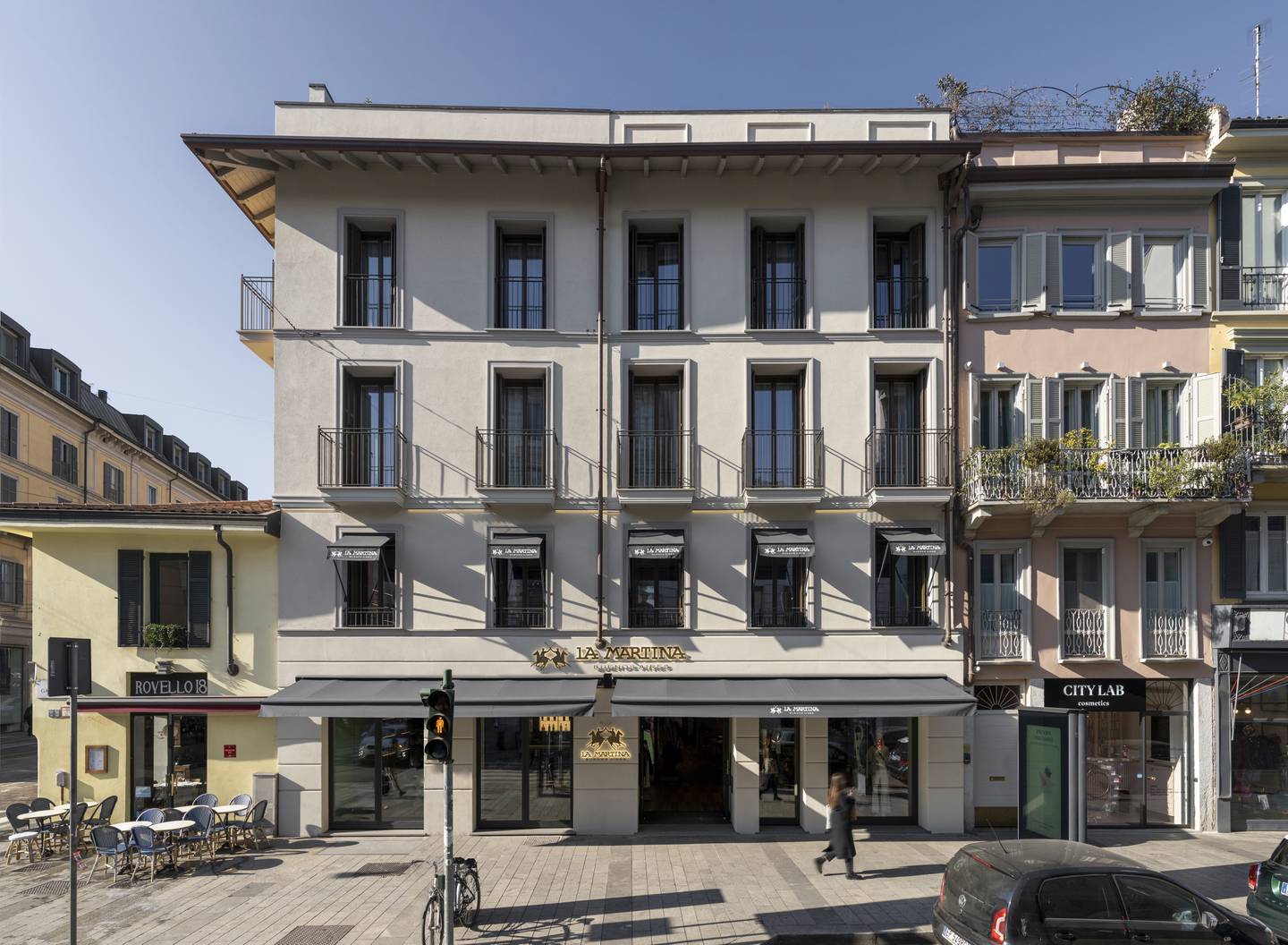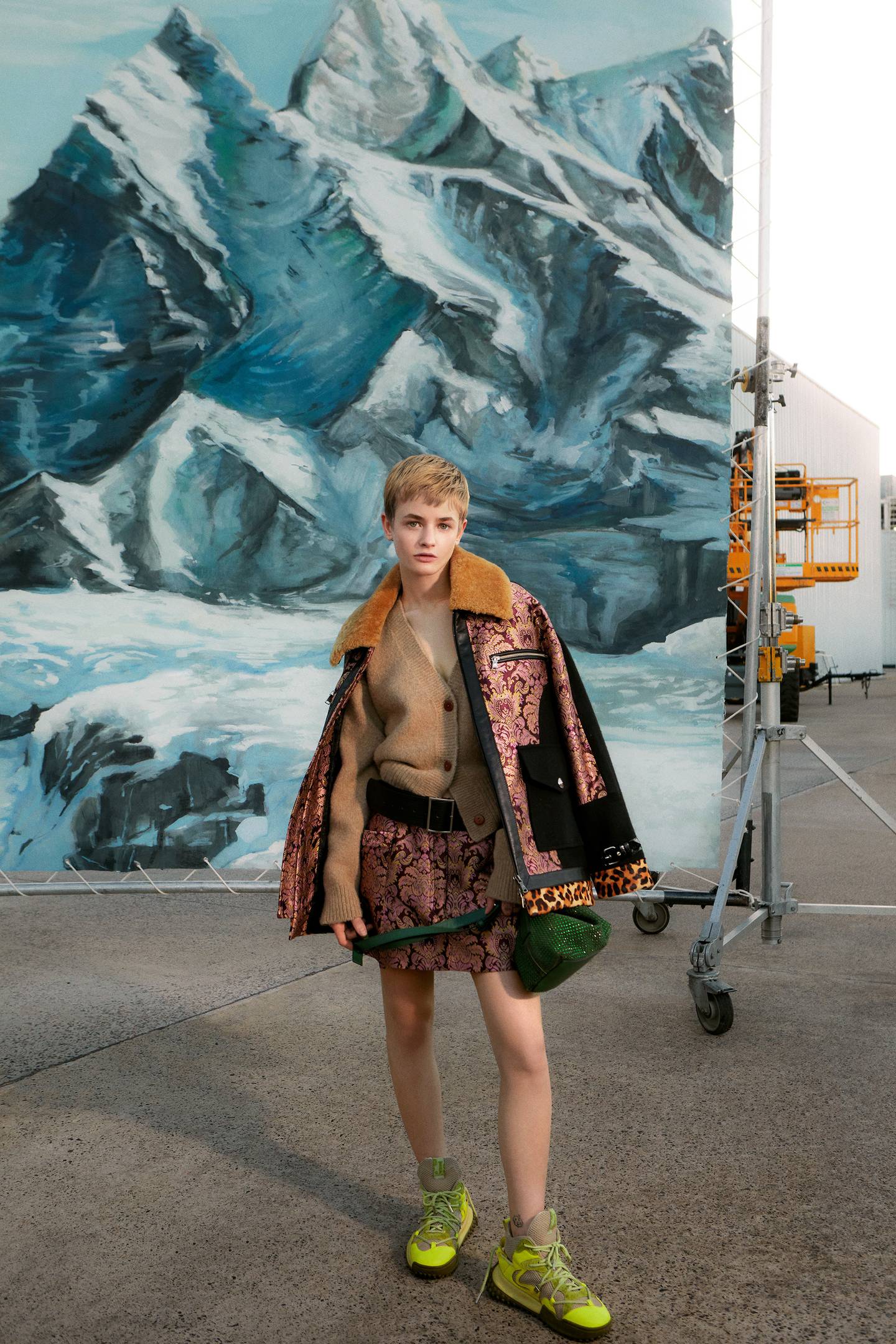
Earlier this year Adrian Simonetti’s team was in Milan opening a swish new flagship store for La Martina, the polo-infused fashion brand he leads from Argentina. At the same time, the so-called ‘perpetual crisis’ that has plagued the chief executive’s home country for decades went into overdrive as annual inflation exceeded 100 percent. The contrast between the successful expansion of one Argentine company and the failure of the country’s economic policies couldn’t have been starker.
“The great recognition we’ve received in Europe [over the years] has boosted the business [overall and had] a positive impact in Argentina and [elsewhere] in Latin America. However, Argentina’s macroeconomic context presents major challenges like instability, changes in the country’s foreign trade policies, inflation and restrictive measures,” said Simonetti.
Shortly after his father Lando Simonetti founded La Martina in 1985, the family embarked on a mission to transform it into a global business. Today, the company has 700 distribution points across 25 countries including flagships in upmarket districts of Paris and Dubai as well as cities in Latin American countries like Mexico, Chile, Colombia, Brazil and Peru. It has also rolled out retail networks in key Asian markets like China and India.
Simonetti may be used to the orderly glamour of European fashion capitals, but he operates from a very different environment back in Argentina where his team of 100 employees run both the international and domestic business units. He can’t afford to be complacent about the latter since Argentina still accounts for a substantial 30 percent of company revenues through sales in 20 mono-brand stores across the country, from Buenos Aires in the east to Mendoza in the west.
The International Monetary Fund has provided more than 20 huge financial bailouts to the country over the years including an instalment of $6 billion last December. The cumulative effect of Argentina’s chronic instability has been soaring poverty and unemployment rates, a serious decline in living standards for the country’s lower- and middle-income consumers and a precarious operating environment for businesses across the board.
“Argentina’s growth performance over the past decade has been dismal,” said Martin Uribe, an Argentine professor of economics at Columbia University in the US, adding that the unfavourable economic environment goes back much further. “Noteworthy crises… since the 1980s involve the debt default of 1982, the hyperinflation of 1989-1991, the default crisis of 2001 and the balance-of-payments crisis of 2018. With no doubt whatsoever, all four crises have led to a large contraction in economic activity and high inflation.”
The key to survival through such turmoil, Simonetti suggests, is an agile management style. “We compete as an Argentine company, with limited resources and against the best brands in the world [so] we’ve acquired flexibility to move in different scenarios, thinking long-term as well as short-term,” he said.
“Nowadays we’ve reached a limit in the Argentina market. We’re benefitting from the growth of tourism coming to the country, but not so much from the local market,” Simonetti said, explaining that continuous international expansion has been key to growth.

Simonetti declined to disclose company earnings but said that EBITDA (earnings before interest, taxes, depreciation and amortisation) has been improving significantly in recent years, reaching 30 percent of turnover in 2022.
Yet company leaders like Simonetti now face a new wave of uncertainty. Argentina’s political transition is predicted to be turbulent next year as Javier Milei, a radical libertarian and self-described “anarcho-capitalist” who admires Donald Trump’s so-called “battle against socialism” was recently elected the country’s new president.
Some local business leaders were alarmed by both main candidates in the election, but others felt optimistic that Milei’s policies could tame hyperinflation. Argentine stocks and bonds did rise in trading outside the country immediately after his November win. However, supporters of his rival during the election fear Milei’s promises to make “drastic” changes to the economy could go too far or be counterproductive.
Only time will tell how the new government will impact the economy but businesses in Argentina are nothing if not resilient to change.
Operating in a Hostile Environment
Dusting off some memories from one of the most serious economic crises in Argentina’s history, Simonetti recalls how his father managed to battle for survival back in 2001 during the ‘corralito’ period.
“The corralito was dramatic. Supply chains halted, the banks closed, and people came into work with so much uncertainty. We reached a point where our cash [reserves] would last for just two more weeks,” said Adrian Simonetti.
“There were tears” from employees and suppliers when his father announced that they would have to wait to get paid until he found a way through the crisis, Simonetti recalled, but most of the company’s 50 staff members at the time kept working as the family steered La Martina through the chaos. Some of the youngest workers who remained are now company leaders, such as chief financial officer Juan Sebastian Labanca and Latin America regional chief executive Pablo Villalba.
“Whenever it comes to crises in Argentina, the human factor always sustains the business,” said Simonetti.
In recent years, companies operating in Argentina have been challenged not only by domestic instability but the local impact of international black swan events like the pandemic and global disruptions including the Ukraine war.
Domestically, however, “the first and most important [factor] is economic instability [due to] high inflation, currency devaluation and constant changes in government policies,” said Abelardo Marcondes, chief executive and founder of Mexico City-based LuxuryLab Global, a consultancy specialising in Latin American markets.
“The knock-on effect of such instability has been that local companies have “had to deal with infrastructure, logistics, sourcing of materials and transportation challenges [because Argentina] lacks modern frameworks. Costs have therefore increased for fashion companies,” Marcondes added.
On top of hyperinflation, labour costs are also relatively high due to government regulation, impediments to international trade and a shortage of credit.
“Argentina is suffocating because there is a lack of dollars. The country has a bad strategy for wanting to keep business ‘easy’ in a closed economy [meaning it’s] losing the opportunities of an open economy. Even so, a few fashion [and textile] companies manage to ride out [the turbulence],” said Ramiro Castiñeira, an Argentine economist and director of the economic and finance consultancy Econometrica.
According to Constanza Sierra, director of Buenos Aires-based Essentia Consulting, a firm serving premium and luxury brands, the challenges have led some Argentine companies to “move to other regions with clearer rules.”
Marcondes agrees: “Argentine fashion companies have mitigated the impact of economic instability mainly through diversification, exploring opportunities in international markets as well as expanding their customer base… [and pursuing] partnerships, collaborations…and digitalisation.”
Indeed, La Martina is not the only company to have found a way through Argentina’s many economic crises.
Spreading Risk Across the Region
Blue Star Group (BSG) has largely prospered since 1995 when it was launched by Carlos Castelli, an Argentine entrepreneur who eventually transformed the small family business into a network of 800 physical stores across Latin America.
The group, which owns high-street brands Todomoda and Isadora produced from factories in Buenos Aires and Chaco, has scaled thanks to well-timed overseas expansion plans. Such was the case when Argentina’s 2001 crisis reached its peak. Castelli spread the company’s risk to Mexico, where now more than a quarter of its stores are located, approximately the same number of stores as in Argentina, ranging from Jujuy in the far north to Chubut in the deep south.
“In 2011 we started operating in Chile and Peru. Then operations in Brazil happened in 2019 and Paraguay was our most recent launch in 2022,” said Martin Castelli, president of BSG, and son of Carlos, the founder. The company also sells on e-commerce giant Mercado Libre.
Though Castelli declined to disclose sales figures, he told BoF that the company has been “growing in an organic way with earnings and revenues increasing year on year, except for the pandemic [period].”
Another example of an Argentine label becoming a regional hit is Rapsodia, a company founded by Francisco de Narváez, Josefina Helguera and Sol Acuña in 1999. The contemporary fashion brand has grown from a small showroom in Las Cañitas to a footprint of 73 stores in five other Latin American countries: Mexico, Colombia, Chile, Uruguay and Paraguay.
“From day one we decided that the company had to be regional. The strategy had a lot to do with the fact that we couldn’t have 100 percent Argentinian risk. But through [our] retail, design, production and development arm, plus finances and processes from the back office, we were able to be sustainable during the crises,” says Juan Pazo, president of Rapsodia. “The strength of the company is its stability.”
In 2017, it secured investment from L Catterton, the private equity firm backed by LVMH and the Arnault Group.

Some of Argentina’s designer brands have also scaled up significantly despite the country’s seemingly endless economic and political instability. Jazmin Chebar, an eponymous womenswear brand famous for its printed textiles, expanded from a single Buenos Aires shop in 1997 to a company operating 31 stores across the region (11 of which are overseas in Uruguay, Chile, Paraguay, Peru and Mexico), employing 540 people.
Over the years, Argentina’s unpredictability may have slowed down some of the brand’s business plans, but it didn’t stifle growth completely. Though it declined to disclose earnings, Jazmin Chebar indicated that the number of garments produced annually went from 6,000 units in 2001 to 600,000 units in 2022. “The target is to reach a million garments in the next five years [albeit] in an uncertain world,” said company president Claudio Drescher.
While many fashion businesses in Argentina have failed over the years, or struggled to the point of being on the brink of bankruptcy, a small group of companies including La Martina, Blue Star Group, Rapsodia and Jazmin Chebar have found a way to do more than just survive the country’s ‘perpetual crisis.’
Their successes are not just a factor of market-ready designs and careful overseas expansion plans. According to Sierra, the firms also tend to offer clever branding strategies and customer service innovations.
Most of all, “Argentine companies have a characteristic that we should not be proud of [if it is the only feature of their success], but it is an [important] characteristic [nonetheless]. And that is adaptability,” said Jonatan Loidi, chief executive and founder of Buenos Aires-based consultancy GrupoSet.
Being forced by the country’s turbulent market to become adaptable at a high-level has made some companies very good at being “adaptable to [specific] changes [like] consumption [patterns], trends and [fluctuating] resources,” Loidi added.
“[It’s not just about] adapting to survive [here] but being able to create incredible things at the same time that end up being used by the whole Latin American region. I believe this is a distinguished feature of the Argentinian fashion market.”



